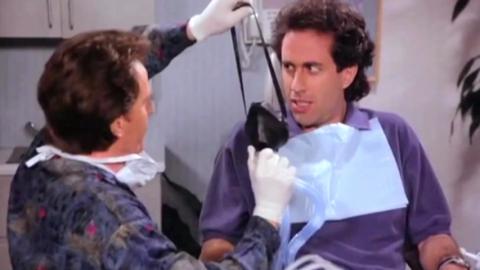Top 10 Accidental Inventions

Sometimes a single accident can change the world. Join http://www.WatchMojo.com as we count down our picks for the top 10 accidental inventions. For this list, we're looking at the products that resulted from moments in history when scientists inadvertently stumbled upon some pretty life-changing discoveries. Whether they stemmed from sticky stowaways in dog fur or from leaving their experiments out for too long, these accidental inventions revolutionized our lives.
Special thanks to our users emmaround21, Marlon Jacques, Diamond Cruz, Philip Folta, 85turtle and Andy Jarrin for submitting the idea on our Suggestions Page at WatchMojo.comsuggest
Top 10 Accidental Inventions
Top 10 Craziest Japanese Inventions You'll NEVER Need
Sometimes a single accident can change the world. Welcome to WatchMojo.com, and today we’re counting down our picks for the top 10 accidental inventions. For this list, we’re looking at the products that resulted from moments in history when scientists inadvertently stumbled upon some pretty life-changing discoveries. Whether they stemmed from sticky stowaways in dog fur or from leaving their experiments out for too long, these accidental inventions revolutionized our lives.
#10: X-Ray (1895)
Top 10 People Who INSANELY Didn't Get Rich Off Their Inventions
In 1895, German physicist Wilhelm Röntgen was doing his scientist thing when he happened upon a discovery that influenced how we treat anything ranging from cavities to broken bones to luggage. He was messing around with cathode rays, trying to prove whether or not they could pass through glass, when he noticed a glow on a screen nearby. That probably wouldn’t have been strange had it been deliberate, but as an unintended consequence of his work, it was remarkable – and since he couldn’t explain it, he nicknamed it “X-radiation.” More than a century later, X-ray technology can be used in cancer treatment, and can ensure you don’t smuggle anything untoward onto a flight.
#9: Velcro (1948)
Pets make awesome companions, but sometimes they come in handy in the science world as well. While hanging outside with his dog, engineer George de Mestral noticed burrs sticking to his dog’s fur and his own clothing. Upon inspection under a microscope, he found the seeds themselves were shaped like hooks, which allowed them to stick to animal fur or anything that mimicked a “loop” shape. Though no one was particularly interested in the idea at first, de Mestral built upon the concept of “velours crochet” – or “velvet hook” – eventually leading to a patent and Velcro’s use in spacesuits and annoying wallets.
#8: Stainless Steel (1913)
Back when the world was still using steel that “stained” – or rusted – one intrepid metallurgist shot to the forefront of the industry. There’d been a good 20 years of research into the idea of a steel alloy that doesn’t rust, but it wasn’t until English metallurgist Harry Brearly was approached by an arms company to develop a specialized gun barrel that he accidentally cracked the stainless code. While working to develop a rust-free material for gun manufacturing, he ended up developing one that didn’t corrode. It’s a discovery that made steel even more applicable to everyday uses.
#7: Dynamite (1867)
Alfred Nobel, y’know the dude responsible for the Nobel Peace Prize, was also the guy behind the invention of dynamite. He was the mind behind blasting caps, used for safe detonation of nitroglycerin, but he was looking for a less deadly way to transport and utilize the volatile substance. One day, a crate containing nitroglycerin fell over and spilled into the substance used to used to encapsulate the jars – called kieselguhr. But nothing exploded. Nobel recognized that the silica provided the much-needed stabilization, and the sand-nitroglycerin paste mixture could then be safely transported and detonated reliably.
#6: Teflon (1938)
Back in 1938, Roy Plunkett – a chemist working for DuPont – was trying to develop a new type of refrigerant when something curious happened: he and his assistant were working specifically with tetrafluoroethylene when they noticed that the interior of one of the steel cylinders in which they’d contained it had become covered in a waxy substance. Their further experiments with the material found that this polymerized perfluoroethylene was extremely slippery – in fact, it was one of the most slippery substances known to man. So, naturally, it was applied to frying pans.
#5: Microwave Oven (1946)
Back when the Allied Forces were revving up for World War II, an American radar specialist was helping develop radar equipment for potential use in the conflict. In his lab one day, Percy Spencer was working with magnetrons when he noticed that the chocolate bar in his pocket had melted – and not from his body heat. Connecting the dots back to the magnetrons he’d been handling, Spencer discovered that a radar set could be used to cook food like popcorn and eggs. And thus, decades later, Hot Pockets and pizza bagels got their day in the sun. Or just two minutes in the microwave.
#4: Implantable Pacemaker (1960)
While the idea that electrical impulses could help normalize heartbeats had been around for a while, you can thank Wilson Greatbatch for making it possible to see your grandparents for a few extra years. As an electrical engineer, Greatbatch was working to develop an oscillator to record heartbeats when he put the wrong piece into his machine. When he turned it on, he noted that the pace it was keeping seemed to be in sync with a human heartbeat. After being shrunk down and protected from bodily fluids, the device became the first practical, implantable pacemaker – almost entirely by chance.
#3: Plastic [Bakelite] (1907)
Right around the turn of the century, inventor and chemist Dr. Leo Baekeland was looking for a way to replace a product made from the excrement of the lac beetle – known more commonly as shellac – as it was being used for everything from wood varnish to gramophone records. Baekeland had already made his mark in photography with innovations in developing and printing, but according to his own words he hoped to make money by discovering a shellac substitute. Instead, he stumbled upon an interesting formulation: his combination of phenol and formaldehyde produced a moldable, easily hardened material that may not have been shellac, but it ushered in an era of happy, shiny plastic stuff – and we’re sure it made him plenty of cash.
#2: Anesthesia (1840s)
Historically, cultures worldwide had been using some form of anesthetic for pain relief or recreation for millennia, but it wasn’t until the 1800s that its use in medical procedures was formalized, with several men claiming ownership of the discovery. As the story goes, dentists Horace Wells and William T. G. Morton witnessed the effects of anesthetics at “laughing parties,” which were gatherings where people basically got high. Intrigued by its apparent pain-inhibiting properties, Wells used laughing gas, or nitrous oxide, for his own tooth extraction, while Morton used ether in a procedure. Along with several other doctors, these men helped implement the widespread usage of anesthetics in medicine. Before we discover our top pick, here are a few honorable mentions: - Viagra (1998) - Saccharin (1878) - Super Glue (1942) - The Psychedelic Effects of LSD (1943)
#1: Penicillin (1928)
Sometimes, good things come to those who are gross. In this case, those good things came in the form of a medical revolution sparked by a messy lab. After summer vacation, Scottish scientist Alexander Fleming returned to his laboratory at St. Mary’s Hospital to a little surprise; he’d apparently left some of his petri dishes out, allowing mold to grow. Upon closer inspection, he noticed the mold was actually inhibiting the growth of the bacteria around it. In an era when a simple infection could mean rapid death, this was nothing short of a medical miracle. Several years later, the world’s first antibiotics were put to use, saving lives around the globe. Do you agree with our list? What do you think is the best accidental invention? For more entertaining Top 10s published every day, be sure to subscribe to WatchMojo.com.



